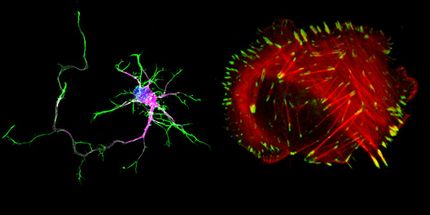Efficacy of investigational anti-HIV agent tipranavir demonstrated by new data
Advertisement
New data from multiple analyses support the efficacy of the investigational non-peptidic protease inhibitor tipranavir in treatment-experienced HIV-positive patients. In a 24-week analysis of the RESIST pivotal phase III studies, treatment regimens containing tipranavir boosted with low-dose ritonavir (tipranavir/r) were more effective than regimens containing lopinavir, the market leading protease inhibitor (PI) that is boosted with low-dose ritonavir (lopinavir/r or Kaletra®). In another recent 24-week analysis, tipranavir-containing regimens were consistently more effective than regimens containing a comparator PI of lopinavir, saquinavir, amprenavir or indinavir, regardless of the number and type of baseline protease mutations. These analyses also indicate that more patients achieved a treatment response whenever other active anti-HIV agents were added to tipranavir therapy.
In the RESIST studies, treatment response was defined as a confirmed 1 log10 drop in viral load at 24 weeks. Treatment response was achieved by 39.6% of patients who received tipranavir/r therapy compared to 21.4% of patients who received lopinavir/r (p<0.0001). Moreover, a greater proportion of patients receiving tipranavir therapy achieved a viral load below the level of quantification than those who were treated with lopinavir/r. At 24 weeks, 34.1% of patients in the tipranavir/r arm and 18.3% in the lopinavir/r arm achieved a viral load of less than 400 copies/mL.
An additional analysis of the RESIST data shows that a consistently greater proportion of patients taking tipranavir/r responded to treatment than patients taking a comparator PI/r, regardless of the number and type of baseline protease mutations. Treatment response was achieved by 50.4% vs. 29.8% of patients with 12 or fewer protease gene mutations in the tipranavir/r and comparator PI/r arms, respectively. In the presence of 19 or more mutations, 31.7% of patients taking tipranavir/r vs. 7.7% of patients taking a comparator PI/r achieved a treatment response.
Most read news
Other news from the department science

Get the life science industry in your inbox
By submitting this form you agree that LUMITOS AG will send you the newsletter(s) selected above by email. Your data will not be passed on to third parties. Your data will be stored and processed in accordance with our data protection regulations. LUMITOS may contact you by email for the purpose of advertising or market and opinion surveys. You can revoke your consent at any time without giving reasons to LUMITOS AG, Ernst-Augustin-Str. 2, 12489 Berlin, Germany or by e-mail at revoke@lumitos.com with effect for the future. In addition, each email contains a link to unsubscribe from the corresponding newsletter.


























































